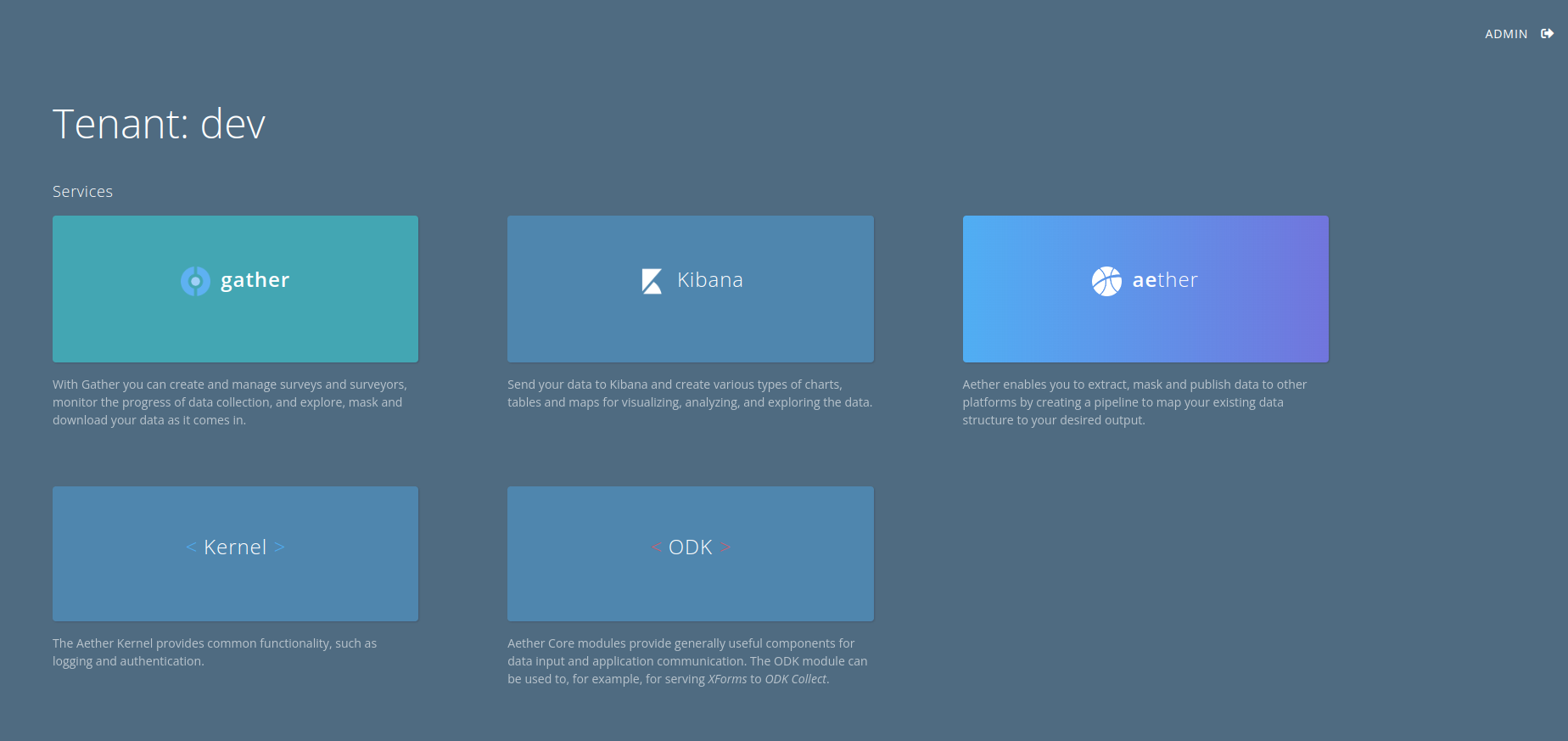Documentation
Introduction to Aether
Try It For Yourself
- Prerequisites
- Install and Configure
- A Simple Aether-Based Solution
- A More Complex Aether-Based Solution
- Adding Aether Connect
Aether UI User Guide
Installing Aether
Aether actually consists of several different servers and services that run in their own virtual network environment. More specifically, it utilizes container-based virtualization, which allows multiple isolated systems, called containers, to run on a single host and access a single kernel. The container we use is Docker and we use Docker Compose to define and script deployment configurations (this is known as “orchestration”). In production, Aether is deployed and maintained using Kubernetes, a more robust system that takes advantage of this technology.
Before following this run-through, make sure you have met the prerequisites defined in the previous section.
Local Browser Client
As mentioned earlier, we are actually setting up an Aether development environment for these exercises. In this environment, we need to define some domain names that will resolve to the actual location of the server. It only needs to be done on the machine that you will be using your web browser from. You will need to edit your /etc/hosts file which will require Administrator or root permissions. Using your favorite plain text editor, open /etc/hosts or C:\Windows\System32\Drivers\etc\hosts for editing.
If you are running both the Aether server and web browser client on the same computer, add a new line as shown below:
127.0.0.1 aether.local
If your server is running remotely from your web browser, for example on AWS, add a line to your /etc/hosts substituting the IP address of your Aether server for XX.XX.XX.XX. The new line should look like:
XX.XX.XX.XX aether.local
NOTE: Editing your /etc/hosts or C:\Windows\System32\Drivers\etc\hosts file will not be required in a production environment.
Into the Aether
We’ve created an aether-bootstrap repository to make it easy for you to get up and running with your first Aether-based solution. It contains a series of docker-compose files and shell scripts that will pull Docker images of the latest version of Aether from Docker Hub and start them up.
git clone https://github.com/eHealthAfrica/aether-bootstrap.git
cd aether-bootstrap
If you are starting Aether or Gather for the first time, you will need to create some docker resources (networks and volumes), generate credentials for all applications and download the docker images:
./scripts/init.sh
Note: Aether-Bootstrap enables multitenancy! The default setup creates three tenants: dev, prod and test.
Now you just need to tell Docker to start them up:
./scripts/start.sh
Once the console output has stopped, you should be able to access the Aether UI in your browser at http://aether.local/dev/. Use these credentials to log in:
- Username: user
- Password: password
Then click on aether box, this will redirect to: http://aether.local/dev/kernel-ui/

If you see this screen, you are all configured and ready to move on:
